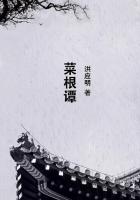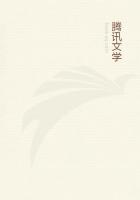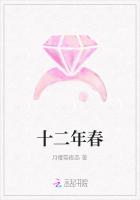STRONG MEN OF THE EIGHTEENTH CENTURY:
THOMAS TOPHAM (died, 1749);
JOYCE, 1703; VAN ECKENBERG, 1718;
BARSABAS AND HIS SISTER; THE ITALIAN
FEMALE SAMPSON, 1724; THE ``LITTLE
WOMAN FROM GENEVA,'' 1751; BELZONI, 1778-1823.
Bodily strength has won the admiration --I might almost say, the worship--of mankind from the days of Hercules and his ten mythical labors, to the days of Sandow with his scores of actual achievements.Each generation has produced its quota of strongmen, but almost all of them have resorted to some sort of artifice or subterfuge in order to appear superhumanly strong.That is to say, they added brain to their brawn, and it is a difficult question whether their efforts deserve to be called trickery or good showmanship.
Many of the tricks of the profession were laid bare by Dr.Desaguliers over a hundred and fifty years ago and have been generally discarded by athletes, only to be taken up and vastly improved by women of the type of The Georgia Magnet, who gave the world of science a decided start about a generation ago.I shall have more to say of her a little further on.
The jiu jitsu of the Japanese is, in part, a development of the same principles, but here again much new material has been added, so that it deserves to be considered a new art.
The following, from Dr.Desaguliers'
Experimental Philosophy, London, 1763, Vol.1, page 289, contrasts feats of actual strength with the tricks of the old-time performers:
Thomas Topham, born in London, and now about thirty-one years of age, five feet ten inches high, with muscles very hard and prominent, was brought up a carpenter, which trade he practiced till within these six or seven years that he has shewed feats of strength; but he is entirely ignorant of any art to make his strength appear more surprising; Nay, sometimes he does things which become more difficult by his disadvantageous situation;attempting and often doing, what he hears other strong men have done, without ****** use of the same advantages.
About six years ago he pulled against a horse, sitting on the ground with his feet against two stumps driven into the ground, but without the advantage represented by the first figure, Plate 19; for the horse pulling against him drew upwards at a considerable angle, such as is represented in the second figure in that plate, when hN is the line of traction, which makes the angle of traction to be NhL: and in this case his strength was no farther employed than to keep his legs and thighs straight, so as to make them act like the long arm of a bended lever, represented by Lh, on whose end h the trunk of his body rested as a weight, against which the horse drew, applying his power at right angles to the end l of the short arm of said lever, the center of the motion being a L at the bottom of the stumps l, o (for to draw obliquely by a rope fastened at h is the same as to draw by an arm of a lever at l L, because l L is a line drawn perpendicularly from the center of motion to the line of direction hN) and the horse not being strong enough to raise the man's weight with such disadvantage, he thought he was in the right posture for drawing against a horse; but when in the same posture he attempted to draw against two horses, he was pulled out of his place by being lifted up, and had one of his knees struck against the stumps, which shattered it so, that even to this day, the patella or knee-pan is so loose, that the ligaments of it seem either to be broken or quite relaxed, which has taken away most of the strength of that leg.
But if he had sat upon such a frame as is represented in the first figure, (Plate 19)he might (considering his strength) have kept his situation against the pulling of four strong horses without the least inconvenience.
The feats which I saw him perform, a few days ago, were the following:
1.By the strength of his fingers (only rubbed in coal-ashes to keep them from slipping) he rolled up a very strong and large pewter-dish.
2.He broke seven or eight short and strong pieces of tobacco-pipe with the force of his middle finger, having laid them on the first and third finger.
3.Having thrust under his garter the bowl of a strong tobacco-pipe, his legs being bent, he broke it to pieces by the tendons of his hams, without altering the bending of his leg.
4.He broke such another bowl between his first and second finger, by pressing his fingers together side-ways.
5.He lifted a table six feet long, which had half a hundred weight hanging to the end of it, with his teeth, and held it in a horizontal position for a considerable time.IT IS TRUE THE FEET OF THE TABLE RESTEDAGAINST HIS KNEES; BUT AS THE LENGTH OF THETABLE WAS MUCH GREATER THAN ITS HEIGHT, THAT PERFORMANCE REQUIRED A GREATSTRENGTH TO BE EXERTED BY THE MUSCLES OF
HIS LOINS, THOSE OF HIS NECK, THE MASSETERAND TEMPORAL (MUSCLES OF THE JAWS)
BESIDES A GOOD SET OF TEETH.
6.He took an iron kitchen-poker, about a yard long, and three inches in circumference, and holding it in his right hand, he struck upon his bare left arm, between the elbow and the wrist till he bent the poker nearly to a right angle.
7.He took such another poker, and holding the ends in his hands, and the middle against the back of his neck, he brought both ends of it together before him; and, what was yet more difficult, he pulled it almost straight again: because the muscles which separate the arms horizontally from each other, are not so strong as those that bring them together.















